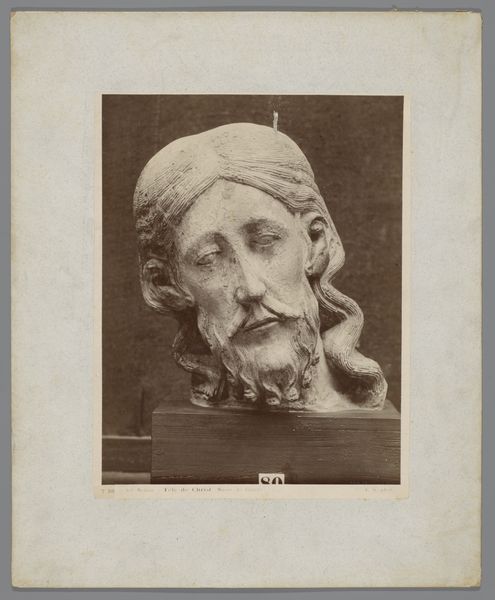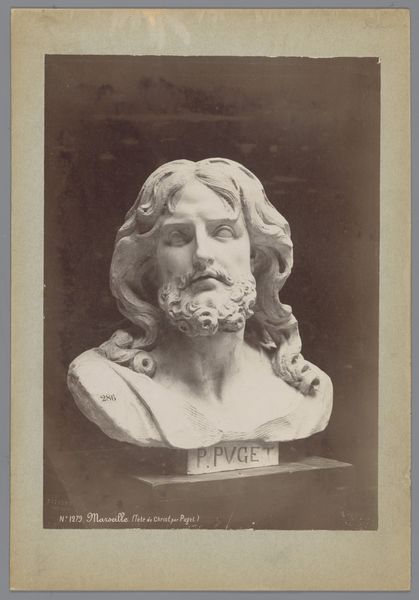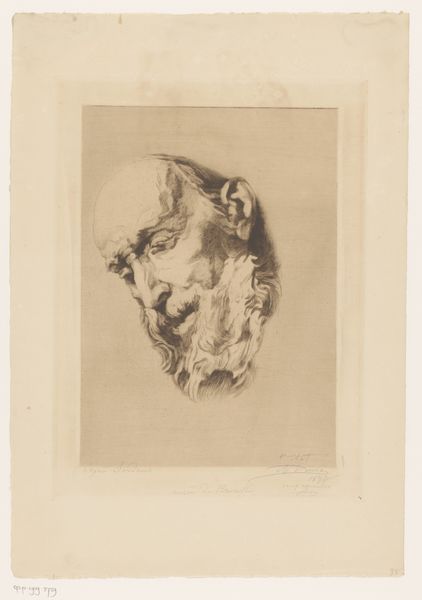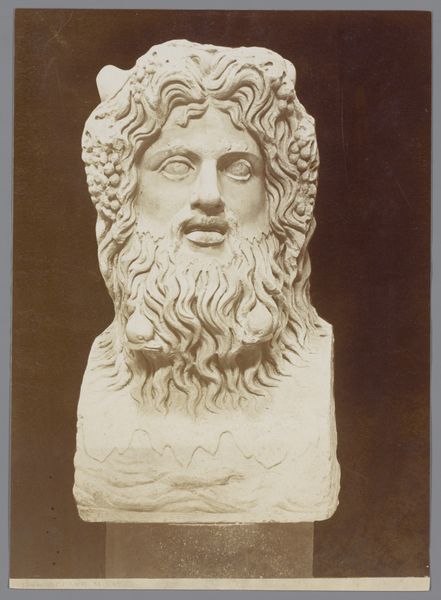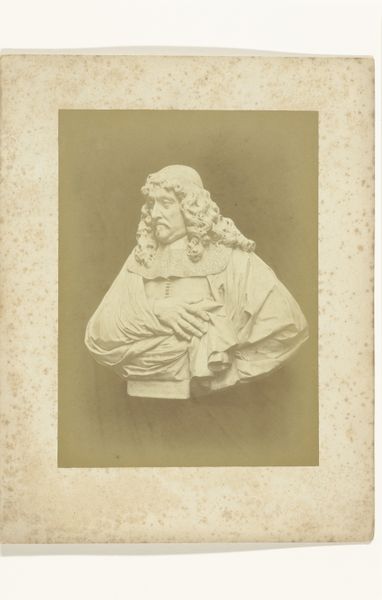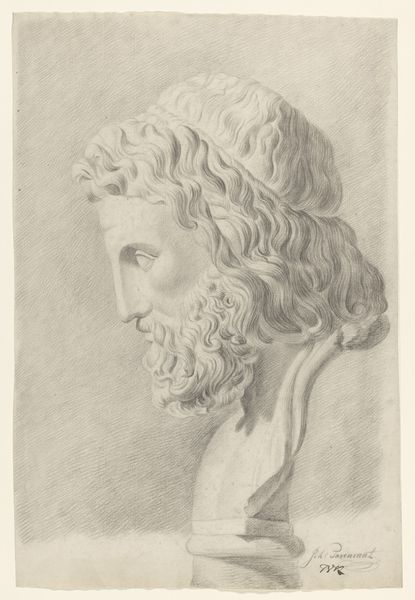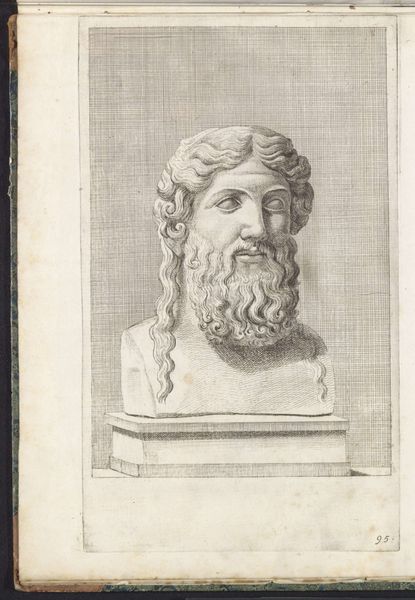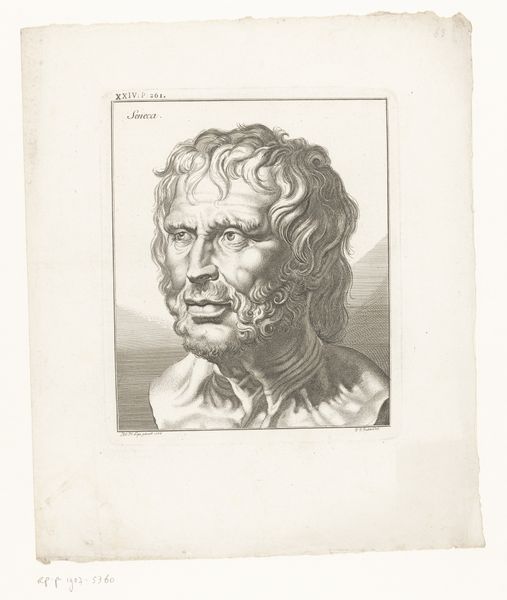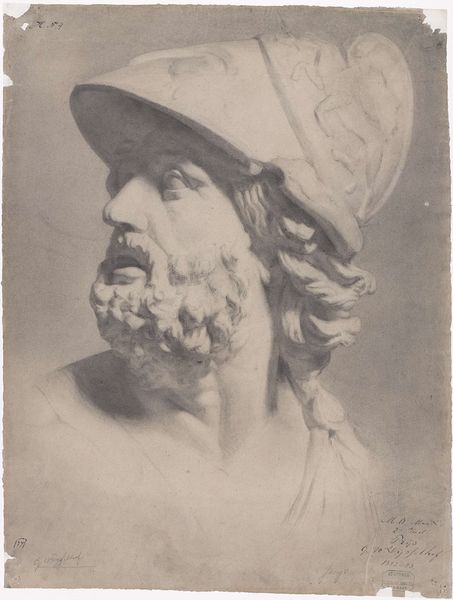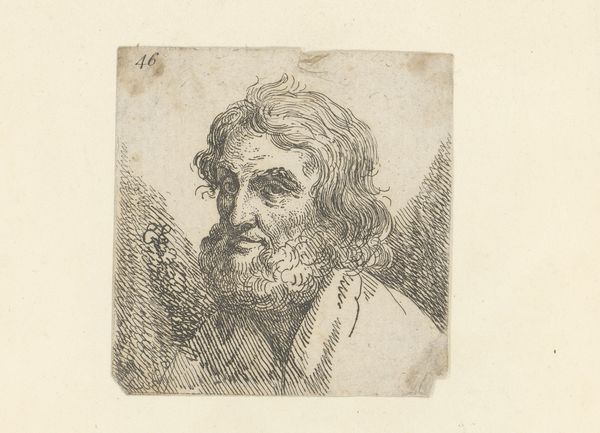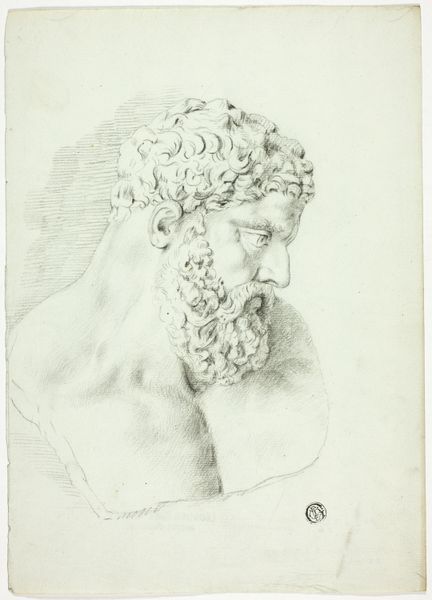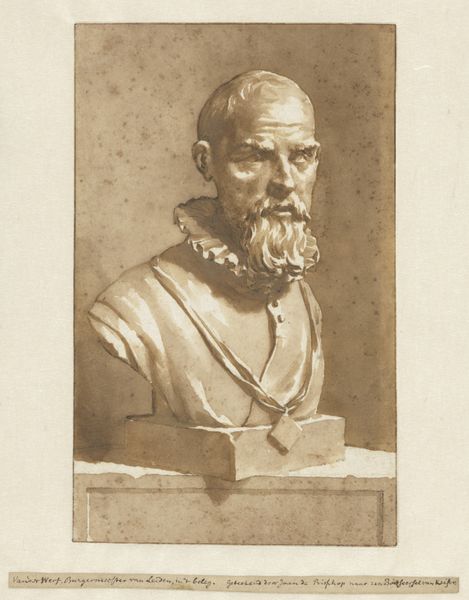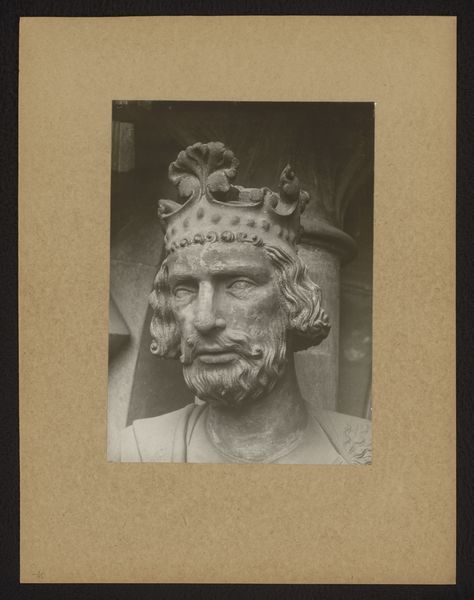
bronze, photography, sculpture
#
portrait
#
16_19th-century
#
greek-and-roman-art
#
classical-realism
#
bronze
#
photography
#
sculpture
#
19th century
#
statue
Dimensions: height 151 mm, width 151 mm, height 330 mm, width 410 mm
Copyright: Rijks Museum: Open Domain
Curator: Before us, we have an interesting find titled “Sculptuur van Homerus in het British Museum”, placing its origins in the period of 1851 to 1880. What strikes you first? Editor: The stark simplicity, really. It's essentially a bust, cropped within a circle, all in monochrome. It’s immediate in its presentation of Homer’s figure, but I wonder about the intent behind its photographic capture. Curator: Well, to begin, let's consider the context of its creation. The 19th century saw an intensified fascination with classical antiquity, with Homer standing as a towering figure of Western literary tradition. But this isn't just about paying homage. Think about the social currents; the construction of national identities was frequently linked to claiming descent from, or association with, classical cultures. Homer, thus, becomes a vehicle. Editor: I agree. Looking at the materiality, bronze implies permanence and importance. How do the techniques of sculpture production contribute to this particular representation? What does bronze mean in relation to a photograph representing a sculpture? Curator: Ah, you're prompting crucial questions. The decision to reproduce the sculpture in bronze speaks volumes. Bronze casting was a laborious, specialized skill and this classical realism nods to ancient processes in an effort to establish cultural legacy. Consider who would have commissioned this: likely someone wanting to associate with power and the elite traditions of learning and artistry. This photograph served to make Homer portable, accessible. It's about the democratization of art but still very elitist. Editor: I am very interested in these contradictions. Also the means of mass reproduction –how did that affect perceptions of cultural authority in its time? And today? How does the context affect how we engage with classical icons like Homer? Curator: Indeed. We must keep unraveling how power is represented and challenged throughout time. It serves as an emblem of a historical power structure. What appeared fixed or timeless gets continuously revisited to be reconfigured according to today's ever-changing views. Editor: Exactly, what remains from Homer's legacy? Considering process and material helps to unpack that ongoing engagement with classical figures. It gets people involved with thinking on the artwork's multiple meanings and how those meanings change over the years.
Comments
No comments
Be the first to comment and join the conversation on the ultimate creative platform.
